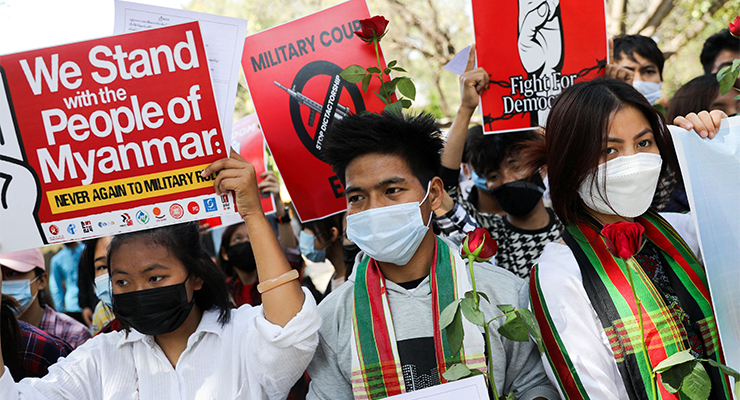
It has been almost a month since Vladimir Putin invaded Ukraine, a month of horror as the world’s press covers the death and destruction.
But commentary around the international media response to Ukraine suggests the invasion has received more extensive coverage than other humanitarian crises owing to Ukraine’s Eurocentric location and inhabitants.
Today the Biden administration officially declared that Myanmar’s military committed genocide against the Rohingya Muslim minority. It’s a pertinent reminder that although the events in Ukraine are horrifying, conflict continues around the world — but that outside Europe and the Western world receives far less coverage.
Myanmar
Beginning in 2017, 730,000 Rohingya Muslims were forcibly removed from their homes and pushed into neighbouring Bangladesh in what the US has determined was a systematic campaign of genocide that included mass killings and gang rapes.
Violence and atrocities against minorities have continued ever since, and reportedly have worsened since the 2021 military coup. In the past 12 months, there have been 12,000 casualties and almost a million people internally displaced.
Yemen
After years of internal conflict and struggle between the Yemeni government and the Houthi movement, Yemen has been crippled by military interventions by a Saudi Arabian-led coalition of Arab states since 2015. What was initially touted as a weeks-long intervention to remove the Houthi insurgency has become a years-long military stalemate that has devastated the country.
Casualties in 2021 are estimated to be about 5000. Since the conflict began in 2011, it is estimated more than 233,000 people have died, more than half owing to indirect causes such as famine and lack of health services. In November 2021 the UN called the situation in Yemen the “world’s worst humanitarian disaster”. It is estimated 2.3 million children under the age of five are “acutely malnourished” and half the country does not have access to safe drinking water.
Ethiopia
The civil war tied to the Tigray region of Ethiopia has led to a humanitarian crisis. The conflict stems from a highly complex series of political coalitions emerging from the Ethiopian civil war that has seen neighbouring countries, including Eritrea and Sudan, entering the conflict.
While the total number of casualties is unclear, some estimates suggest that up to half a million deaths have resulted from direct conflict and indirect factors including starvation. Limited coverage of the crisis belies the severity of the humanitarian crisis, where the UN has suggested war crimes have been committed by all sides of the conflict.
Afghanistan
Although the US withdrawal from Afghanistan and the subsequent resurgence of the Taliban received significant media attention, the continuing deterioration of the humanitarian situation has largely slipped from the public’s consciousness.
In 2021, there were as many as 40,000 casualties in Afghanistan, with the severity of the humanitarian disaster worsening day by day. Save the Children estimates that as many as 120,000 children may have been sold since the Taliban returned to power in August 2021, with 20% of Afghan families being forced to send their children to work. They found that more than half of the population of Afghanistan do not have adequate access to food.








Crikey is committed to hosting lively discussions. Help us keep the conversation useful, interesting and welcoming. We aim to publish comments quickly in the interest of promoting robust conversation, but we’re a small team and we deploy filters to protect against legal risk. Occasionally your comment may be held up while we review, but we’re working as fast as we can to keep the conversation rolling.
The Crikey comment section is members-only content. Please subscribe to leave a comment.
The Crikey comment section is members-only content. Please login to leave a comment.